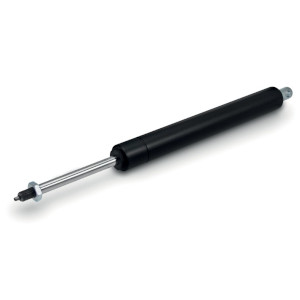Molle a gas
Gas springs are used in applications where you want to push, pull, raise, lower or position lids, doors or other components without the help of external force. They are preloaded individually at a certain pressure, depending on the application. During the compression of the stem there is an increase in nitrogen pressure which therefore increases the reaction force.
Gas springs have a practically flat force curve; this feature makes them useful where it is necessary to obtain a thrust proportionate to the weight to be lifted or moved.
Main typologies:
| Compression gas springs: it is the standard model. The pressure of the nitrogen inside keeps the rod extended outwards which, by re-entering, due to the force to which it is subjected, compresses the nitrogen through the piston. The compression of the gas generates an axial force with a flat force curve. In this way, a thrust proportional to the load to be supported is obtained. |
 |
|
| Traction gas springs: it works in the opposite way to gas springs in compression. When the load is not present, the nitrogen pressure in the body keeps the rod retracted. The force (of progression) to which the gas spring will be subjected will pull the stem outwards. They are used for all applications where normal gas springs cannot be used due to lack of space. |
 |
|
Lockable gas springs: they allow to lock the position of the stem in a certain position. They are divided according to the type of block:
- Manual mechanical lock placed on the gas spring, which allows the stem to be locked in any position.
- Lock in-Lock out system, where it is possible to lock the stem in the fully closed or fully open position.
- Release or lock button that acts on an internal valve positioned on the piston. This allows the stem to be locked in any position.
|
 |
|

